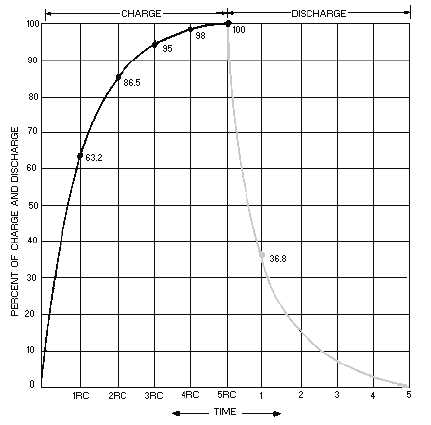4-15
Figure 4-11.—RC time constant.
In filter circuits the capacitor is the common element to both the charge and the discharge paths.
Therefore, to obtain the longest possible discharge time, you want the capacitor to be as large as possible.
Another way to look at it is: The capacitor acts as a short circuit around the load (as far as the ac
component is concerned), and since
the larger the value of the capacitor (C), the smaller the opposition (X
C) or reactance to ac.
Now let's look at inductors and their application in filter circuits. Remember, AN INDUCTOR
OPPOSES ANY CHANGE IN CURRENT. In case you have forgotten, a change in current through an
inductor produces a changing electromagnetic field. The changing field, in turn, cuts the windings of the
wire in the inductor and thereby produces a counter electromotive force (CEMF). It is the CEMF that
opposes the change in circuit current. Opposition to a change in current at a given frequency is called
inductive reactance (XL) and is measured in ohms. The inductive reactance (XL) of an inductor is
determined by the applied frequency and the inductance of the inductor.
Mathematically,
XL = 2
p
fL
If frequency or inductance is increased, the XL increases. Since inductors are placed in series with
the load (as shown in figure 4-12), the larger the XL, the larger the ac voltage developed across the load.



